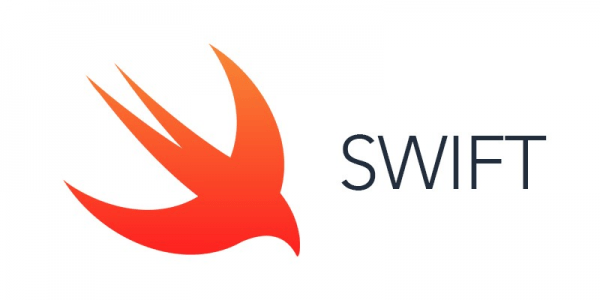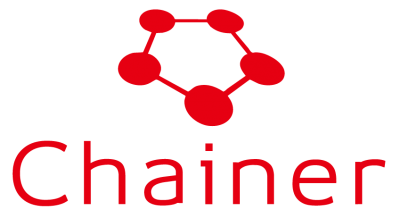Deep Learning has gained the high amount of popularity in the Recent Years and it has been one of the most demanding and evolving fields of computer Science Today. But, this Field is not as easy as various other fields or areas in the computer science. It requires various complex Frameworks, Algorithms and tools in order to Analyze and manage the data efficiently and Accurately.
So, in this Blog we are going to discuss about various Deep Learning tools/Frameworks, Various key factors to get started using them and most importantly Why you should learn that particular Framework/Tool for Implementing Deep Learning.
- TensorFlow

Google’s TensorFlow is the most popular Deep Learning framework today. Gmail, Uber, Airbnb, Nvidia and lots of other MNC’sare using it. TensorFlow is mainstream and also considered as the no.1 Deep Learning framework today.
Key Factors to Get started with TensorFlow:
- Pythonis the most convenient client language for working with TensorFlow. However, we can also use other interfaces available in JavaScript, C ++, Java and Go, C # and Julia.
- TensorFlow takes into account not only powerful computing Power but it also manages the ability to run models on mobile platforms likeiOS and Android.
- TensorFlow needs a lot of coding. It will not give you powerful AI overnight, it’s just a tool for deep learning research. You need to think carefully about the architecture of the neural network, correctly assess the dimension and volume of input and output data.
- TensorFlow operates with a static computation graph. That is, we first define the graph, then we run the calculations and, if we need to make changes to the architecture, we re-train the model. Such an approach was chosen for the sake of efficiency. But many modern neural network tools are able to take into account refinements in the learning process without a significant loss in learning speed. In this regard, the main competitor of TensorFlow is the PyTorch.
Why to Learn TensorFlow?
- It’s simple for creating and experimenting various architectureof deep learning, and its formulation is convenient for data integration such as inputting graphs, SQL tables, and images together.
- Let me tell you that TensorFlow is Backed by Google and so it guarantees that it will stay around for a while, hence it makes clear sense to invest time and resources in order to learn it.
- PyTorch

The mainstream tool for deep learning after TensorFlow is PyTorch. The PyTorch framework was developed for Facebook services but is already used for its own tasks by companies like Twitter.
Key Factors to Get started with PyTorch:
- Unlike TensorFlow, the PyTorch library operates with a dynamically updated graph. This ensures that it allows you to make changes in the architecture whileprocessing the data.
- In PyTorch, we can use standard debuggers, for example, pdb or PyCharm.
Why to Learn PyTorch?
- The process of training a neural network is simple and clear in PyTorch. Also, it supports the data parallelism (distribution of data across different nodes, which operates the data in parallel) and distributed learning model, and also contains many pre-trained models, which reduces the developer’s Efforts.
- PyTorch is much better suited for small projects and prototyping various Projects. But, when it comes to cross-platform solutions, TensorFlow takes the lead.
- Sonnet

Sonnet deep learning framework built on top of TensorFlow. It is designed to create neural networks with a complex architecture by the world-famous company DeepMind.
Key Factors to Get started with Sonnet:
- The idea of Sonnet is to construct the primary Python objects corresponding to a specific part of the neural network. Further, these objects are independently connected to the computational TensorFlow graph. Separating the process of creating objects and associating them with a graph simplifies the design of high-level architectures.
Why to Learn Sonnet?
- The main advantage of Sonnet, is we can use it to reproduce the research demonstrated in DeepMind’s papers with greater ease than Keras, since DeepMind will be using Sonnet themselves.
- So, In-short it’s a flexibletool that takes the lead from TensorFlow and PyTorch.
- Keras

Keras is a machine learning framework that can be used if weare working on a lot of data and calculations.
Key Factors to Get started with Keras:
- Keras is usable as a high-level API on top of other popular lower level libraries such as Theano and CNTK in addition to TensorFlow.
- Prototyping here is facilitated to the limit. Creating massive models of deep learning in Keras is reduced to single-line functions. This strategy makes it a less configurable environment than other existing low-level frameworks.
Why to Learn Keras?
- Keras is the best Deep Learning framework for those who are just starting out. It’s ideal for learning and prototyping simple concepts, to understand the very essence of the various models and processes of their learning.
- Keras is a beautifully written API. The functional nature of the API helps you completely and gets out of your way for more exotic applications. Keras allows you to access the lower level frameworks.
- MXNet

MXNet is a highly scalable deep learning tool that can be used on a wide variety of devices. Although it does not appears to be as widely used as yet compared to TensorFlow, MXNet growth likely will be boosted by becoming an Apache project.
Key Factors to Get started withMXNet:
- C ++, Python, R, Julia, JavaScript, Scala, Go, and even Perl, all these languages are supported by MXNet Framework.
- The main emphasis is placed on the fact that the framework is very effectively parallel on multiple GPUs and many machines. This framework has been demonstrated by Amazon on their work on AWS (Amazon Web Services).
Why to LearnMXNet?
- Support of multiple GPUs.
- Clean and easily maintainable code.
- Fast problem-solving ability, which is requested by most of the Newbie’s in this Deep Learning.
- Gluon

Gluon is another great Deep Learning framework which can be used to create simple as wells as Advanced Complex models.
Key Factors to Get started withGluon:
- The specificity of the Gluon is flexible interface that simplifies prototyping, building and training deep learning models.
- Gluon is based on MXNet and offers a simple API that simplifies the creation of deep learning models.
- Like PyTorch, the Gluon framework also supports working with dynamic graphs, combining this with high-performance MXNet. This indicates that Gluon looks is an interesting alternative to Keras for distributed computing.
Why to LearnGluon?
- In Gluon, we can define neural networks using the simple, clear, and concise code.
- It brings together the training algorithm and neural network model, thus providing flexibility in the development process without sacrificing performance.
- Gluon enables to define neural network models that are dynamic, meaning they can be built on the fly, with any structure, and using any of Python’s native control flow.
- Swift

If you are into programming, when you hear Swift, you will probably think about app development for iOS or MacOS. If you’re into deep learning, then you must have heard about Swift for TensorFlow (abbreviated as S4TF).
By integrating directly with a general-purpose programming language, Swift for TensorFlow enables more powerful algorithms to be expressed like never before.
Key Factors to Get started with SWIFT:
- Differentiable programming gets first-class support in a general-purpose programming language. Take derivatives of any function, or make custom data structures differentiable at your fingertips.
- New APIs informed by the best practices of today, and the research directions of tomorrow, are both easier to use and more powerful.
- The Swift APIs gives you a transparent access to all low-level TensorFlow operators.
Why to Learn SWIFT?
- A great choice if dynamic languages are not good for our tasks. If we have a problem arises when we have training running for hours and then our program encounters a type error and it all comes crashing down, enter Swift, a statically typed-language. Here we will know ahead of any line of code running that the types are correct.
- Chainer

Until the advent of DyNet at CMU, and PyTorch at Facebook, Chainer was the leading neural network framework for dynamic computation graphs or nets that allowed for input of varying length.
Key Factors to Get started with Chainer:
- The code is written in pure Pythonon top of the Numpy and CuPy libraries. Chainer is the first framework to use a dynamic architecture model (as in PyTorch).
- Chainer has beaten various records on the effectiveness of scaling when modeling problems solved by neural networks.
Why to Learn Chainer?
- By it’s own benchmarks, Chainer is notably faster than other Python-oriented frameworks.
- Better GPU & GPU data center performance than TensorFlow. Recently, Chainer became the world champion for GPU data center performance.
- Good Japanese support.
- OOP like programming style.
- DL4J

DL4J is the Popular Neural Network framework which is associated with Java, and it is abbreviated as Deep Learning for Java.
Key Factors to Get started with DL4J:
- Training of neural networks in DL4J is carried out in parallel through iterations through clusters.
- The process is supported by Hadoop and Spark
- Using Javaallows you to use the library in the development life cycle of programs for Android devices.
Why to Learn DL4J?
- A very good platform if you are looking for a Good Deep Learning Framework in Java.
- ONNX

The ONNX project was born from the collaboration of Microsoft and Facebook.It simplifies the process of transferring models between different means of working with artificial intelligence.
Key Factors to Get started with ONNX:
- ONNX enables models to be trained in one framework and transferred to another for inference.
Why to Learn ONNX?
- ONNX is available now to support many top frameworks and runtimes including Caffe2, MATLAB, Microsoft’s Cognitive Toolkit, Apache MXNet, PyTorch and NVIDIA’s TensorRT. There is also an early-stage converter from TensorFlow and CoreML to ONNX that can be used today.
- ONNX provided the first solution to utilize multi-threading in a JavaScript-based AI inference engine, which offers significant performance improvements over any existing solution on CPU